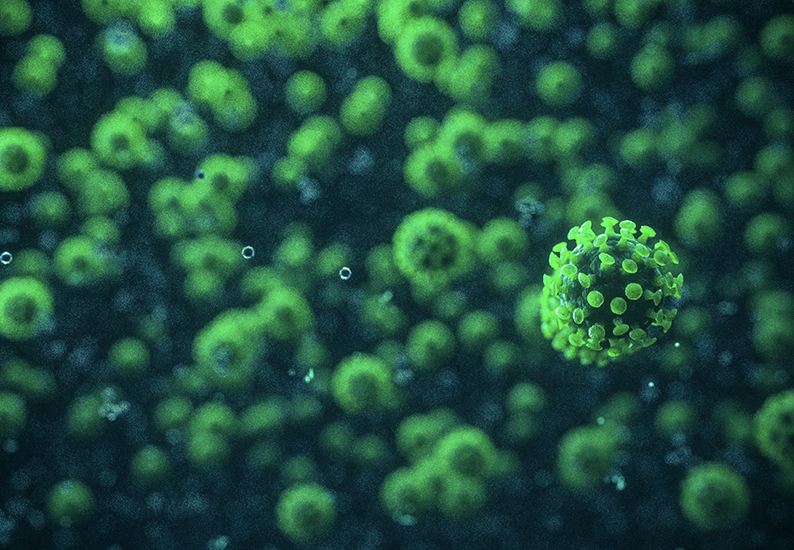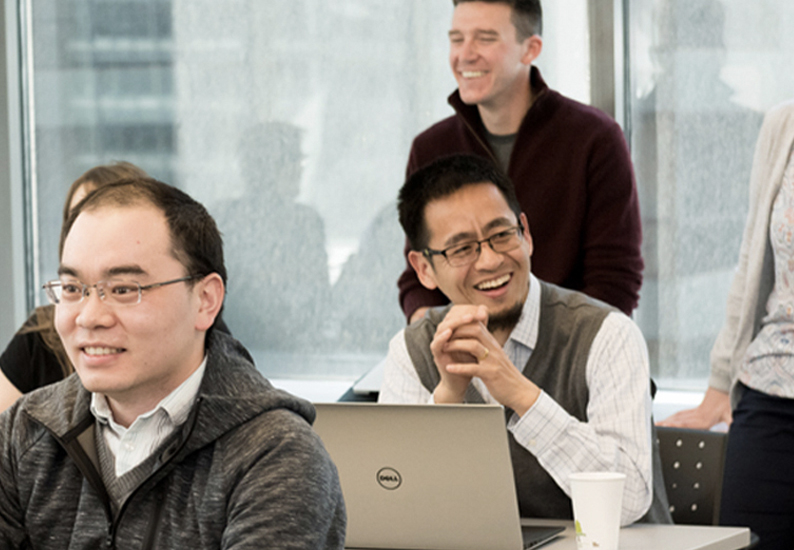Imagine that the entire universe of “chemical space”—all the molecules that could ever possibly be created—is the size of an ocean. How much have we explored so far? Much less than a single drop of water. Stop for a minute and consider that: All the therapies and materials we have ever developed—from blood-pressure pills to cell-phone displays—come from that teeny fraction of a single drop. Imagine what we could accomplish if we could look beyond. The possibilities are truly boundless.
As the biopharma industry races to develop therapies and vaccines for the global pandemic, it’s imperative that we both broaden our gaze and quicken our pace. We need to explore more of the ocean, and we need to do it more quickly.
A new collaboration between Schrödinger and Google Cloud is designed to advance both goals—and thereby accelerate the hunt for effective medicines to treat COVID-19.
This collaboration is one piece of an unprecedented philanthropic initiative that has brought together leading biopharma companies from around the world—including Novartis, Takeda, WuXi, and Gilead Sciences—to develop antiviral therapies for COVID-19.
The first step in any drug discovery process is assessing molecules that could, potentially, prove effective against a given target. To make that evaluation, you have to answer a number of key questions: How tightly does the molecule bind to the target? Does it bind only to the target, or does it interfere with other important pathways in the cell? Is it soluble? How quickly is it metabolized? And so forth. In the past, the only way to get these answers was to synthesize the molecule in the lab and physically test it. As you might imagine, this was an extremely time-consuming and expensive process.
Schrödinger’s physics-based computational platform has revolutionized this crucial step in drug discovery. Over nearly 30 painstaking years of research, we have translated the laws of quantum mechanics and molecular dynamics into algorithms that enable swift evaluation of several crucial molecular properties “in silico” (on the computer) rather than “in vitro” (in a test tube or culture dish).
An ongoing strategic collaboration with Google Cloud gives our drug hunting team at Schrödinger access to immensely powerful computing capacity—equivalent to the world’s fastest supercomputers—to run these physics-based calculations in our commercial work undertaking drug discovery for biopharma partners and for our own internal pipeline.
Now, Google Cloud is making those same resources available to the global COVID-19 R&D alliance.
Under the terms of the grant, Google Cloud is providing 16 million hours of GPU time to enable Schrödinger to more comprehensively support the drug discovery efforts of this multi-company, philanthropic initiative to identify novel small-molecule therapies to address COVID-19 and possible future coronavirus outbreaks. If used consecutively, that would equate to 1,826 years of around-the-clock computing. In reality, of course, we leverage high-speed parallel computing, so we can move much more quickly than that statistic would imply.
In fact, with these computing resources at our disposal, we at Schrödinger are able to triage and evaluate literally billions of molecules each week for COVID-19 therapeutics, just as we do for other drug discovery projects. That means we’re exploring more of that ocean, more quickly.
We don’t want to leave you with the impression that we will have new drugs for COVID-19 patients overnight. Physics-based free-energy calculations performed on high-speed computers can accelerate drug discovery, but they can’t work miracles. Once we’ve identified the molecules that we believe would have the best in vitro properties, our partners in the alliance will still have to synthesize and test them in the lab. They’ll likely have to go through several rounds of optimization and testing before they can move into animal and clinical studies.
Still, the type of computational design we do can potentially shave years and millions of dollars from drug discovery projects, and create a greater likelihood of success. That’s what we hope to accomplish with COVID-19. We know we must work now to build our armamentarium for future waves of infection.
We hope physics-based computational design and high-speed parallel computing will lead the way.










